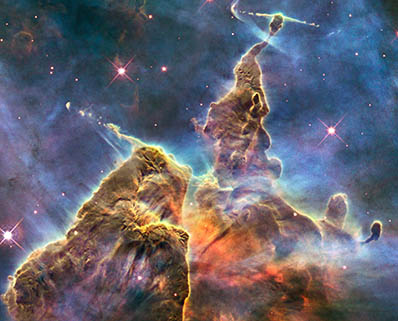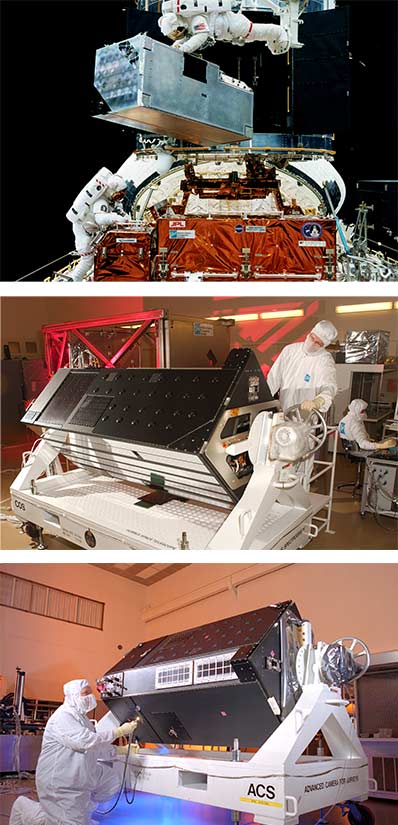

Iconic Images
An Astounding Universe
Many of astronomy’s pioneering discoveries and most iconic space images have come from the Hubble Space Telescope. Since its launch in 1990, Hubble has revealed secrets of our universe that continue to inspire and awe scientists the world over. With more than 1.4 million observations, Hubble has enabled more than 16,000 scientific papers, making it one of the most productive scientific instruments ever built.
From the beginning, the Hubble Space Telescope was designed to allow astronauts to repair and upgrade it. This allowed NASA to renew critical equipment during five servicing missions, updating the sensitive instruments with the latest technology.

What We Did
Instrument & Subsystem Provider, Custom Tool Builder
We built seven science instruments for Hubble, two star trackers, five major leave-behind equipment subsystems and more than eight custom tools to support astronauts during servicing missions. Each of the five science instruments now operating on the telescope were Ball-designed and built.
Perhaps the most famous of our Hubble instrument is the Corrective Optics Space Telescope Axial Replacement (COSTAR) that helped correct Hubble’s hazy vision. We designed and produced the complex COSTAR optics in only 28 months instead of the typical 48. When COSTAR and JPL’s WFPC-2 camera corrected Hubble’s vision after the first servicing mission in 1993, Ed Weiler, NASA’s chief Hubble astronomer, said the telescope was "fixed beyond our wildest expectations."
Our seven science instruments are:
- The Cosmic Origins Spectrograph (COS) and the Wide Field Camera 3 (WFC3), installed during Servicing Mission 4 in 2009, updated Hubble’s visible and ultraviolet light imagers for higher performance. No longer needed, COSTAR was removed during this servicing mission.
- The Advanced Camera for Surveys (ACS), installed during Servicing Mission 3 in 2002 doubled Hubble’s field of view with sharper image quality and more sensitive detectors.
- Our Near Infrared Camera and Multi-Object Spectrometer (NICMOS) and Space Telescope Imaging Spectrograph (STIS) were installed during Servicing Mission 2. These instruments enabled infrared imaging of distant galaxies and the search for black holes. Our Goddard High Resolution Spectrograph (GHRS) was removed after seven successful years of operation.
- COSTAR was installed during Servicing Mission 1 in 1993 along with JPL’s WFPC-2 to correct Hubble’s hazy vision.
- GHRS, launched on Hubble in 1990, was designed to detect ultraviolet light, allowing the detailed study of stars, galaxies and planets.
Each Ball instrument installed on Hubble incorporated its own corrective optics and used leading edge technologies designed to deliver the highest science return.
